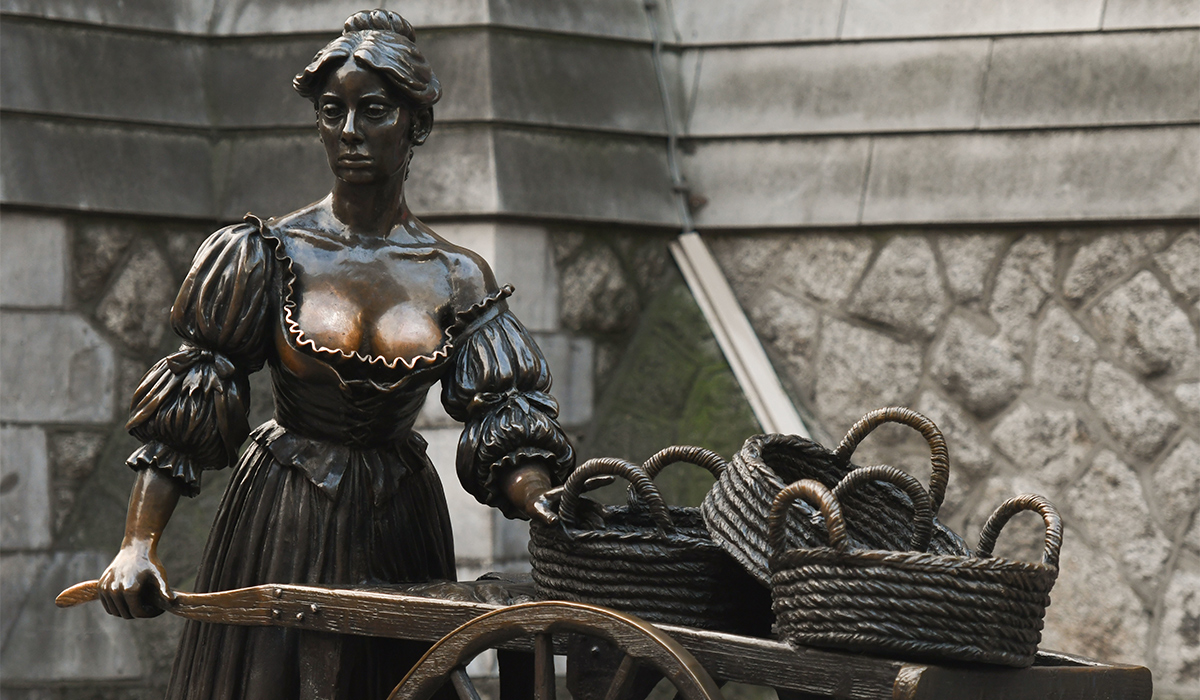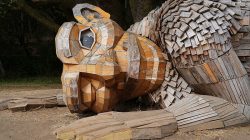Addressing Unwanted Behavior Around the Molly Malone Statue
In a bid to prevent unwanted physical contact with the iconic Molly Malone statue in Dublin city centre, local authorities are planning to install flowerbeds around the monument. This initiative is aimed at curbing the persistent behavior of tourists and passers-by who rub the bronze figure’s breasts, a practice that has led to visible damage over time.
The Molly Malone statue, a beloved landmark in Dublin, has become a target for inappropriate touching. The statue’s neckline has turned a darker color due to repeated rubbing, and its foundation has suffered from people climbing the plinth to take photos. These actions have raised concerns among city officials about preserving the historical and cultural value of the statue.
Earlier this year, Dublin City Council attempted a week-long stewarding program to discourage such behavior. While the initiative saw some success in deterring people from touching the statue, it was not considered a long-term solution. According to Ray Yeates, an Arts Officer at the council, the problem resurfaced quickly once the stewards were no longer present.
‘While people did respond to requests from stewards not to touch the statue, when it was not being patrolled the groping quickly resumed,’ Yeates explained. He added that the act of rubbing the statue’s breast area had become ingrained in the behavior of some visitors, making daily patrols unsustainable.
To address the issue, the council plans to introduce flowerbeds around the statue. This measure will serve as a physical barrier, discouraging both touching and climbing. The installation will coincide with summer restoration works designed to repair the damage caused to the statue and reinforce its base.
This approach is not entirely new. Last year, a similar tactic was used around the Dublin Portal, where anti-social behavior, including climbing and public indecency, had been reported. By creating a natural obstacle, the city hopes to reduce the likelihood of further damage and ensure the preservation of its landmarks.
Other solutions were also considered, such as raising the height of the statue. However, this option was ruled out due to the high cost—estimated at over €100,000. Yeates emphasized that the primary concern is the damage caused by repeated touching, which affects the statue’s integrity and can be distressing for some members of the public.
Despite the challenges, the council remains committed to finding a sustainable solution. It is currently consulting with various departments before finalizing the plan. If all goes smoothly, the installation of the flowerbeds is expected to begin in the coming weeks.
By taking proactive steps, Dublin City Council aims to protect its historical monuments while ensuring a respectful experience for all visitors. The move reflects a broader effort to balance tourism with preservation, ensuring that iconic landmarks like the Molly Malone statue remain intact for future generations.







